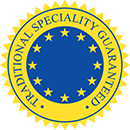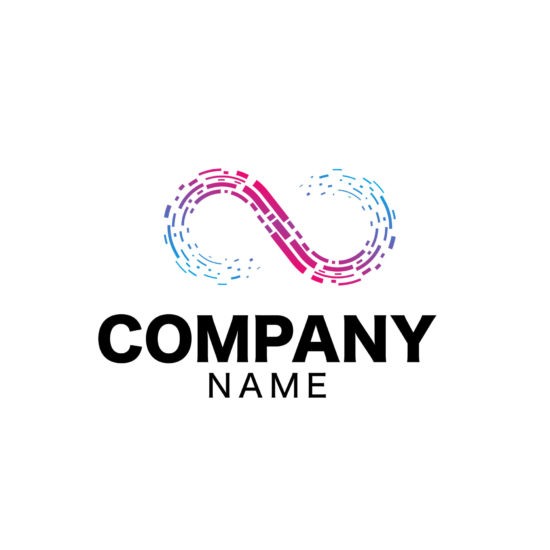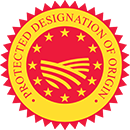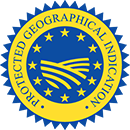IPR Basics
|
Copyright Copyright protects a person’s creative work which transpires in the form of a literary or artistic work. In order to qualify for copyright protection, a work must be a sufficiently independent and original. These requirements are assessed on a case by case basis against a fictional threshold of originality, the level of which varies between different types of works. The formation of copyright does not require the use of the ©-symbol or registration. Instead, the protection comes into effect when a work meeting the requirements of the Copyright Act has been created. Copyright is granted to the human who created the work, i.e. the author. The exclusive right is in force until 70 years have passed from the year of the author’s death. The rights provided by copyright are divided into economic and moral rights: some of these rights protect the financial interest of the author and some protect the author and later right holders from moral injury. The author’s permission is generally required to use his works. However, the law contains several restrictions which narrow the author’s exclusive right. In these situations, the right holder cannot prohibit others from using the work. One of the most important restrictions to copyright is the right to make single copies for private use.
|
|
|
Related rights In addition to copyright, the Copyrights Act also sets out rules on various exclusive rights that resemble copyright. These are called related rights. The related rights protect performing artists, producers of sound and video recordings, radio and television organisations, producers of catalogues and databases, photographers and press reports. Where copyright protects all types of works qualifying as such against the threshold of originality, the related rights protect a rather narrow group of specific types of creations. Acquiring protection by related rights does not require that a work qualifies as a work, and related rights protect investments rather than creative activity. Another crucial difference is the term of protection. A related right is usually in force for a much shorter period than copyright, typically 15-70 years calculated from the completion or the publication of the creation. Some related rights may be directly granted to legal persons, which is not possible in the case of copyright.
|
|
|
Trademarks Trademarks are commercial symbols which distinguish the products and services of a certain company or a person from corresponding products and services of others. The holder of a trademark has the exclusive right to prohibit others from using the same or a similar mark in connection with same or similar products. A trademark may be e.g. a word, a name, a pattern, a combination of letters, a slogan, a sound or even a colour. A trademark must always be distinctive. The exclusive right only covers the goods or services for which the mark has been registered. A well-known trademark may receive protection beyond the classes of goods and services, however. The protection is in force for a period of 10 years and can be renewed as many times as one wants. The scope of protection only covers the geographical area for which protection has been sought. National registrations accord protection in a specific country and an EU trademark is valid in all EU Member States. There exist both unconditional and relative grounds of refusal for the registration of a trademark. The most common obstacles to registration are the lack of distinctive character and the risk of confusion with an existing trademark. In some countries, such as Finland, the exclusive right may also be gained without registration by establishing the trademark. |

|
|
Trade names A trade name is a name that an entrepreneur uses in its operation. A specific part of the operation may also be carried out with a special name called an auxiliary trade name. Furthermore, an entrepreneur may also use a secondary symbol, which is typically the distinctive element, abbreviation or contortion of the trade name. A trade name may be registered in two or more languages if the expressions in the different languages correspond in their content. A trade name of a business in a language other than its actual trade name is called a parallel trade name. A trade name individualizes a business and separates it from other businesses. This requirement of individuality resembles the requirement of distinctiveness in trademark law. An exclusive right to a trade name and an auxiliary trade name may be gained by registration or by establishment. An exclusive right to a secondary symbol may only be gained by establishment. A right based on registration covers the whole country, while a right based on establishment only covers the area where the trade name is established. Another entrepreneur may not use a trade name that is likely to be confused with a protected trade name, unless it can be shown that the proprietor of the trade name will not suffer damage from it. The form and structure of a registered trade name must meet certain criteria set out in the law, in addition to which there also exist certain relative grounds of refusal. A registered trade name is protected until the registration is cancelled, the termination of business operation is notified into the business register or the trade name is altered. An established trade name is in force until the trade name ceases to be established. |
|
|
Brand A trademark is often called a brand in everyday language. However, a brand is a broader concept and can also mean a product, a service, a company or a person which has become widely known due to marketing efforts. A brand is based on a registered trademark to which various values, images, and feelings are associated. A brand can be understood as a fusion of all the images affiliated with a product or trademark, which bring additional value for the company and for which clients are willing to pay. In the Finnish Media Guide a brand is defined as follows: ”A brand means the positive reputation formed around a trademark. The value of a brand consists of the recognition of the name or the logo, the brand loyalty of customers, the sense of quality brought by the brand, and the images associated with the brand. A brand can be seen as a kind of summary of the content or identity of a product or a service. From a media perspective, a brand makes the product attractive and promises quality. A successful and well-known brand adds value to the product and strengthens the identity of its user.” The selection of a target group and the positioning in relation to competitors operating in the same market are especially important while building a brand. |
|
|
Geographical indications The indications of origin of agricultural products and foodstuffs protect products from misuses and forgeries directed at their established names. The idea behind the system is that the products’ attributes are affected by certain uncopiable factors of their areas of origin, such as the soil, climate, flora and fauna. Protection may, as a main rule, only be sought by multiple producers together or an organization representing producers. The protection system covers the EU and includes three classes: protected designations of origin, protected geographical indications and traditional specialities guaranteed. A protected designation of origin requires that the production, processing and preparation of a product take place in a geographical area, in which case the quality or characteristics of the product are essentially due to this area. A protected geographical indication requires that at least the production, the processing or the preparation takes places in a geographical area, to which the quality or characteristics of the product are attributable. An indication of a traditional speciality guaranteed does to refer to the origin of a product but emphasises the traditional composition or production method of a product. These products may be produced anywhere in the EU, provided the production takes place in accordance with the registered method and list of ingredients. |

|
|
Patents A patent is an exclusive right which protects technical solutions. According to the Finnish Patents Act, a patent may be granted for any inventions in all fields of technology, provided that they are susceptible of industrial application, new and involve an inventive step. A patent grants its holder an exclusive right to an invention limited in time and territory, on the basis of which the inventor may prohibit others from commercially exploiting the invention. Commercial exploitation means e.g. the manufacturing, selling, use and importation of a product. Patenting also provides the right holder with negotiation power, improves image and enables the licensing of an invention. Patents are granted for a limited period of time and are in force only in the countries where the patent has been applied for and granted. In Finland, a patent is in force for a maximum of 20 years, but in the case of patents for medicinal and plant protection products, the term of protection can be extended for up to five years. In order to keep a patent in force, one has to pay annual fees for it. The Patents Act includes certain unpatentable groups of inventions. These include discoveries, scientific theories or mathematical methods, aesthetic creations and presentations of information. |
|
|
Utility models Like patents, a utility model protects technical solutions. The protected invention must be new, involve an inventive step and be susceptible of industrial application. The level of inventive step required for inventions protected by a utility model right is lower than for patents. For this reason utility models are best suited for the protection of small improvements to the state of the art. Utility models can also be used to protect chemical compounds, foodstuffs or pharmaceutical products. Methods or usages can only be protected with patents. Similar to patents, a utility model grants an transferable and licensable exclusive right to use an invention. The use of an invention means its commercial exploitation, e.g. the manufacturing, selling, use or importation. Utility models are registered without the examination of novelty, inventive step and industrial applicability. A utility model is in force for a maximum of 10 years from the filing date of the application. Utility models as a form of protection exist in several countries, but for example in Sweden and in the USA, inventions may not be protected by them. |
|
|
Design rights A design right protects the appearance of a product or its part, which results from the features of the product or its ornamentation, such as the lines, contours, colours, shape, texture or materials. In order to be registered, a design must be new and have an individual character. This requires that an identical design has not been published before the design is applied for and that the design differs from previously known products. A design right is an exclusive right which can be in force for a maximum of 25 years and grants the right to exploit the design. No person other than the right holder is entitled to use the design without the latter’s consent by e.g. producing and selling products matching the design. However, a design right does not prevent, for example, the private use of a design for non-commercial purposes or for educational purposes. A design right is generally a national right, but in the EU a community design covering the whole Union may also be applied for with a single application. The appearance of a product can sometimes be also protected by copyright as an “artistic work”. In the case of utility products and handcrafted products, the threshold of originality has been set quite high in Finland, due to which design is often left without copyright protection. |
|

 -verkkolehti
-verkkolehti







